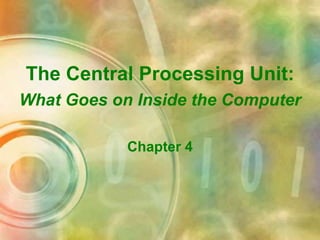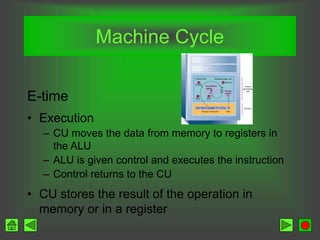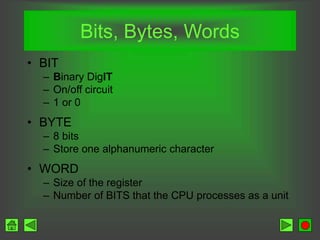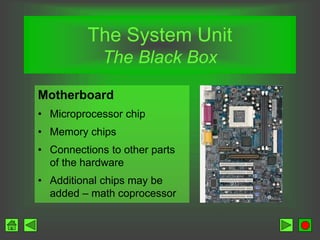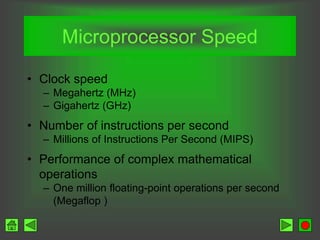The document discusses the central processing unit (CPU) and its components. The CPU consists of a control unit and arithmetic logic unit that work together to execute instructions. It describes how the CPU fetches and decodes instructions from memory and controls the flow of data. It also discusses various types of memory like RAM, ROM, and cache that the CPU uses to store and access data and instructions. Finally, it covers factors that influence computer processing speed like microprocessor speed, bus width, and parallel processing.
